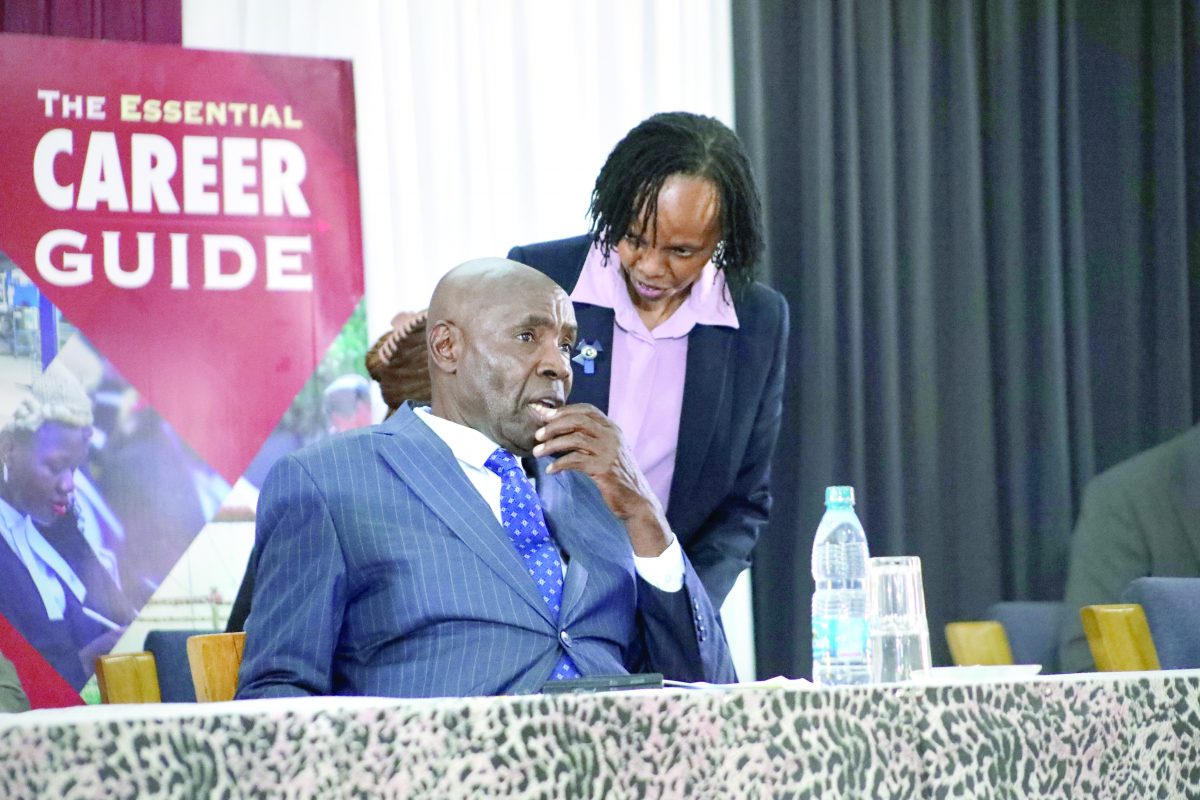500,000 KCSE candidates fail to apply for courses
By Irene.Githinji, August 1, 2023Questions are emerging on the whereabouts of almost 500,000 Kenya Certificate of Secondary Education (KCSE) candidates who sat the exams last year after they failed to apply for placement in any course.
Education Cabinet Secretary Ezekiel Machogu said the Commission for University Education (CUE) and Technical and Vocational Education and Training (TVET) Authority approved 768,624 capacities for student placement in 69 universities, 210 TVET institutions and three Secondary Teacher Training Colleges in the 2023/2024 placement cycle.
Of the 173,244 students who scored the minimum university entry point, 140,107 secured placement in universities with 130,485 expected in public institutions against a declared capacity of 200,621 and another 9,622 placed in private against a capacity of 52,312.
“We are concerned because from those who applied for university admission, we are able to take note 23,138 students have not applied at all, which is 13.35 per cent,” said Machogu.
The Kenya Universities and Colleges Placement Service (KUCCPS) has also placed 9,673 applicants who qualified for degree courses chose to be placed in TVET institutions, 144,500 applicants have been placed in TVET institutions, while 560 in Secondary Teacher Training Colleges (TTCs).
A total of 870,561 candidates were eligible for placement to universities and colleges, where 285,698 students submitted their applications.
He made the remarks yesterday when he released the 2023/24 universities and colleges student placement results and launch of the application portal for loans and scholarships at Kenya School of Government (KSG).
Among those in attendance were KUCCPS Chief Executive Officer (CEO) Dr Mercy Wahome, Higher Education Principal Secretary Dr Beatrice Anyangala, Vice Chancellors and Tvet principals.
“Of those who qualify for diploma courses in our various technical institutions and middle-level colleges 136,592 or 63.9 per cent have not applied for any diploma course. Equally, those who qualify for certificate courses to the tune of 249, 149 or 86.42 per cent have not applied at all,” he stated.
Technical institutions
And added: “We are hoping that they will soon be able to apply because we still have the capacity in our universities, and technical institutions so they should apply to be placed.”
The CS made the remarks even as he stated that the Cabinet recently approved the provision of foundation or bridging courses to enable students to meet the mean grade or cluster subject requirements for admission to university or to specific university programmes.
Machogu said the measure will create opportunities for many students who would otherwise have been denied the chance to exploit their potential.
He said the Ministry, working together with the relevant stakeholders, is working on guidelines and modalities for implementing this directive beginning in September.
“The bridging course commenced in 2008 where for instance, a student had a C (plain) at the verge of getting a C+ and wanted to do certain courses but the cluster points denied them the opportunity so we have reintroduced the programmes in public and private universities, which ended in 2016,” he said.
CUE is expected to send regulations to universities so that respective Senates can work out a system, which will give more Kenyans an opportunity to undertake bridging and then pursue whatever course they want.
The CS also launched an application portal for the new funding model for higher education in the country and for the first time, students whose households are at the bottom of the pyramid will enjoy equal opportunities in accessing university and TVET education through 100 per cent Government funding.
Students categories
“This means their households are not expected to pay anything for the programme cost and additionally, the student will receive upkeep from the loan,” he said.
Out of the 2022 KCSE graduates, Machogu said over 45,000 university students and 42,000 TVET students categorised as vulnerable and extremely needy, will be fully funded with the Government scholarship and loans.
The categorization will be realised through a reliable scientific method Means Testing Instrument (MTI), used to determine the student’s level of financial needs to ensure they are adequately supported.
The continuing students, however, will not be affected by this funding model and will continue to receive their funding based on the Government’s existing model.
“Since the Presidential directive on May 3 on the rollout of the new funding model, the Government has developed and completed the Higher Education Financing Portal, to receive applications for both scholarships, loans and bursaries for university and TVET students. Students who require funding must make a formal application through the Higher Education Financing portal, accessible at www.hef.co.ke,” the CS explained.
He directed Vice-Chancellors and Principals to ensure admission letters are released by August 2 to allow students to apply for loans and bursaries from August 3 up to August 27.
“I urge students to ensure they stick to the set timelines to ensure speedy processing of scholarships and loans since most Universities are preparing to admit First Year students in September,” the CS stated.
He said Ruto unveiled the new funding model to address the current financial challenges at institutions of higher learning because of increasing enrolment in the face of inadequate funding.
In total, universities are indebted to over Sh60 billion, which is ever-expanding.
In TVET institutions, the increasing enrolment has led to a reduction in funding per trainee over the years, from Sh30,000 to as low as Sh17,000 annually.
